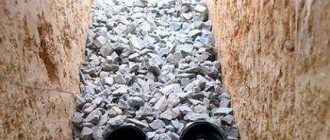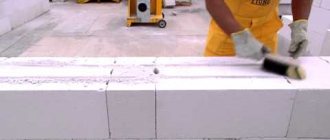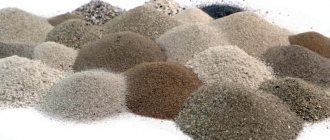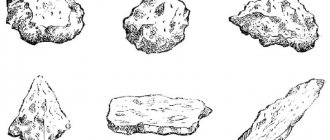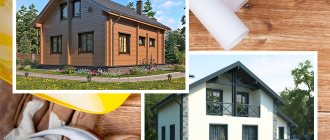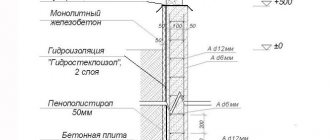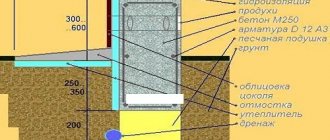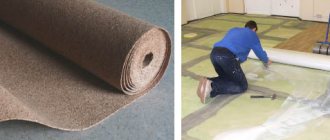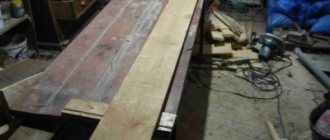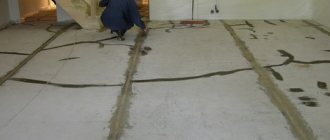Concrete is one of the most common building materials due to its strength, durability and a number of other advantages. However, its aesthetic component leaves much to be desired, so concrete surfaces are always subject to additional finishing. The exception is light-conducting concrete, which, in fact, is what this article is devoted to. In particular, we will take a detailed look at what this material is and how to make transparent concrete with your own hands.
Transparent concrete wall
What is the new material?
It would be more correct to call transparent concrete light-conducting, because its developer is still very far from being completely transparent. Due to its novelty and limited use, a light-conducting concrete mass is relatively expensive to produce, although the technology of transparent concrete does not require special, super complex equipment or unique materials.
For the production of transparent concrete the following are used:
- Special grades of cement with extremely small cement grain size;
- Glass quartz fiber in reels;
- Wetting and air-displacing additives for concrete;
- Pure quartz sand, or more precisely, dust or powder of high purity.
If you can buy cheaply or obtain all the listed components of the required quality, then it is quite possible to start making blocks of transparent concrete with your own hands. So far, the cost of source materials makes the light-conducting array quite expensive for home production.
For your information! The quality of fiberglass plays a primary, even special role in the production of transparent concrete.
To produce transparent material, you cannot use fiber fiber, which is traditionally used for fiberglass and materials with a chaotic reinforcement structure. For transparent concrete, a semi-product is required - quartz fiber in threads, which is produced on special casting machines. This is a semi-product, which is what we need.
The remaining components are well known to almost any builder. This is Portland cement M300 of the finest grinding and sand, pre-screened, washed and dried.
What is stamped concrete
Stamped concrete is also called stamped concrete because it is made using stamps. A special production technology, as well as the application of protective impregnations and varnishes, gives this material increased wear resistance. Press concrete is a new technology that is rapidly gaining momentum in Russia.
This type of concrete is called printed concrete because of the way it is laid and the special appearance that is achieved by imprinting matrices with different patterns.
Printing allows you to imitate decorative stone, paving stones, bricks, boards, paving slabs, or even the texture of leather and metal. Thanks to the texture matrix, it is possible to realize any design ideas. You can imitate anything - from decking and Mexican stone, to natural leather and tree bark.
Properties of transparent concrete mass
If you try to make a transparent material using chopped fiber, you will end up with ordinary, completely opaque fiber-reinforced concrete. The whole idea of manufacturing a transparent array is based on the use of solid fiberglass with a diameter of 0.25 mm.
Structurally, transparent concrete is just an array of fibers laid in a certain way, filled with a binding matrix based on a concrete solution of high fluidity and low shrinkage.
After the process of gaining the design strength of the concrete matrix is completed, transparent concrete exhibits the following characteristics:
- Strength in static unilinear compression corresponds to the level of M250 or good quality concrete of regular composition;
- Frost resistance at the level of masonry brick F-50;
- Water absorption is about 6%, which is very high for a cement-based material;
- Light transmission is only 3-4%. But even this value is enough to create the illusion of transparency.
In fact, transparent concrete is a monolith in which hundreds of thousands of tiny optical channels are embedded, thanks to which the material is able to project shadows and contours falling on a section of the concrete mass even with a casting thickness of up to 200 cm.
That is, in reality, through transparent concrete you can see bright light or the contours of an object; in low light conditions, the light-transmitting material would look like ordinary concrete. If the transparent material were an amorphous monolith, like glass, then a maximum of half a meter of transparency could be obtained.
At the same time, transparent concrete, due to reinforcement, has high bending and tensile strength, vibration loading and alternating loading. the material shows acceptable thermal insulation qualities - 2.1 W/m∙K.
It would be possible to easily build houses and buildings, fences and garages from transparent concrete, if not for one problem - the price of the innovative material is only 500-900 euros per square meter of a twenty-centimeter block.
Specifications
Despite its specific appearance, transparent concrete is produced using classic fine-grained composite technology, and therefore has all the basic properties of this material. The main characteristics of the material include:
- compressive strength from 20 to 35 MPa;
- tensile bending strength of at least 2 MPa;
- water resistance level W4 – W8;
- frost resistance of at least 75 cycles;
- water absorption does not exceed 6%.
The absence of large aggregate in the body of the composite increases the possibility of deformation and shear, so glass fiber for transparent concrete additionally performs the function of internal reinforcement, being a kind of analogue of fiber.
In production conditions, the technology of stage-by-stage casting or layer-by-layer vibrocompression can be used to produce the material. Both options provide reliable fastening of the fibers while maintaining the high performance characteristics of the composite as a whole.
Despite the apparent complexity of implementation, transparent concrete can be made with your own hands, with a little effort and effort.
Production technology and application of transparent concrete
A remarkable quality of transparent concrete is the ability to produce it in artisanal conditions using simplified technology. In laboratory conditions, special methods are used to strengthen the concrete matrix like foam concrete. The result is a light-transmitting material that has 2-3 higher specific strength characteristics than concrete made in a garage or shed.
Advantages of decorative concrete
Printed concrete is superior in its characteristics to natural stone, not only in its rich color range, but also in its operational strength characteristics. This coating is monolithic, which prevents moisture from entering the seams and destruction, just like natural stone.
As a result of laying the material, it is possible to achieve maximum similarity with natural stone, while the financial costs of services for the installation of printed concrete are much lower.
Properly installed stamped concrete will last at least 25 years, and if cared for, even more.
Wear resistance
Printed concrete is a monolithic slab that is coated with impregnation and varnish to preserve color and texture. Therefore, it is 100% UV resistant and does not fade when exposed to sunlight. In addition, printed concrete has high resistance to abrasion and pressure.
2. Solidity
Due to the absence of adhesive seams resulting from paving with piece materials, the canvas does not require regular restoration.
Frost resistance
Decorative printed concrete can withstand temperature changes ranging from minus 50 to plus 50 degrees Celsius. Press concrete guarantees 300 thawing and freezing cycles.
Large selection of shapes and textures.
How the path or steps will look depends only on personal preferences, so a large selection of shapes and colors invites flight of fancy.
Environmental friendliness
Concrete does not contain chemical components that can be released into the environment when heated, as is the case with asphalt derivatives. The material is absolutely non-toxic when heated and cooled, which allows it to be used even in the interior.
Wide color palette
Unlike paving slabs, which come in a palette of about 10 shades, colored printed concrete is available in more than 20 different colors. By expanding the choice for customers, we make working with clients when choosing colors much more convenient.
Pressed concrete is better than paving stones, since bushes will never grow on it and holes will never form. In addition, after a few years it will not be in danger of chipping, fading and scuffing, which will definitely appear on paving slabs.
Making high-quality transparent concrete with your own hands
The method for producing light-transmitting castings can be found in numerous digests and construction-related websites, but most of them simply copy the developer’s description. Let's try to make transparent concrete that is closest in quality to the original. You will first need to make a collapsible mold from plastic or wood with a removable bottom and lid.
Sequence of operations:
- We carefully wash the fiberglass with 647 solvent to remove the preservative lubricant from the surface. The fiber must be cut into pieces equal in length to the thickness of the future block of transparent concrete;
- We sift the cement and sand several times on the finest sieves, separate all contaminants, prepare the batch according to the standard 1:3 recipe, add purified water and 1:10 isopropyl alcohol. We chop the cement-sand mass with a sharp spatula to squeeze out as much air as possible;
- We place a small amount of concrete mass on the bottom of the form and lay out a layer of fiberglass pieces no more than 1 mm thick. The fibers must be laid strictly in one direction. We embed the fiberglass in the solution with a spatula and press it down with a lid;
- The procedure must be repeated until the form is completely filled out. We leave the filled block for a day without disassembling, after which we remove the walls and bottom and place it in a damp room for several days.
The result should be a workpiece that looks like a brick or tile with rough, uneven edges. To achieve transparency, the ends of the casting must be ground and polished, initially with sandpaper, then using a slurry of pumice powder and water.
The main cost item is the purchase of expensive fiberglass, so in home-made production they often try to replace it with cheaper polycarbonate fibers of a similar cross-section. The technology for making fake transparent concrete is approximately the same, with the exception of washing the fibers with organic solvents. To improve adhesion to polycarbonate fibers, water-soluble glue grades are added to the cement-sand mixture.
Fake transparent concrete is lighter than the original light-conducting matrix, breaks easily on impact and cracks when exposed to high heat. A real transparent array of mineral fiberglass will easily survive heating up to 150°C, since the glass and quartz sand included in the matrix have the same characteristics.
Main stages of laying stamped concrete
Installation of decorative printed concrete is carried out in accordance with the technology:⠀
- Fiber-reinforced concrete of a grade not lower than M300 is laid in a layer of five centimeters on the base. Any durable surface can be used as a base.
- A colored fixative is rubbed into the concrete body from above. Its purpose is to plasticize, color and strengthen the concrete before stamping.
- As soon as the base reaches the required consistency, stamping is carried out using a special mold.
- To prevent the form from sticking to the concrete, a colored separator is used, which provides additional coloring.
- After the material has dried, the remaining separator is removed and general adjustments are made.
- The final stage is the use of varnish impregnation. It increases the protective properties of concrete and improves its appearance.
The pattern applied in this way will last as long as possible, since hardeners and a protective coating are used, and with the help of these materials the abrasion process is significantly slowed down.
When laying the coating, we strictly follow all technological aspects. Order the laying of printed concrete only from professionals, because any violations and deviations from the norm can lead to irreversible consequences and undesirable final results of the work (cracks, chips, peeling of the top layer).
What materials do we use?
- It is necessary to use Concrete grade M300, M350 or M400. It is important that the concrete is free of clay, as well as additives not approved by the manufacturer of the decoration materials.
- Colored fixative (topping). Makes a perfectly smooth, beautiful and durable surface.
- The separator is designed to be painted in a second color and prevents the concrete from sticking to the molds.
- Liquid color pigment (Color) is used to create a color accent on a specific area of concrete.
- Varnish impregnation. Protects the material from the influence of water and negative external influences. Also creates a "wet effect" making stamped concrete more attractive.
Use of unusual material
The prohibitive cost of translucent concrete limits its use as a building material. Today, light-transmitting arrays are used primarily as a material for the manufacture of lamps, translucent walls and partitions, decorative elements of office interiors, and even as light inserts in the walls of multi-story buildings.
In the future, transparent concrete, subject to a reduction in production costs, can replace most of the technological window openings and glazing and be used for canopies and roofs. Fiberglass can selectively transmit sunlight, so cheap unbreakable panels can be made from the light-conducting material for greenhouses, sports facilities, and ceiling slabs.


